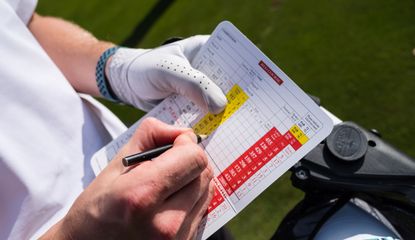What Is Stableford In Golf?
What is Stableford in Golf? We take a look at the popular Stableford scoring format and explain how it works.


Amateurs across the world are indebted to Dr Frank Barney Gorton Stableford. As Henry Longhurst put it, “I doubt whether any single man did more to increase the pleasure of the humble club golfer.”
When playing at Wallasey Golf Club in 1931, Stableford devised a points-based scoring system designed to allow the average golfer to better enjoy a competitive round. It was something of a success.
An alternative to simple strokeplay, the Stableford system has become the go-to scoring system for amateurs across the globe. It allows players who have a bad hole to stay in the game.
How Does Stableford Work
The Stableford system is popular because it should speed up play. Those who are having a nightmare on a single hole can simply pick up and try again on the next hole. You don’t have to finish every hole to return a total Stableford score.
The system works by awarding points based on your nett score (your handicap adjusted score) on each hole. Points are awarded as such:
6 points – Four strokes under
5 points – Three strokes under
4 points – Two strokes under
3 points – One stroke under
2 points – Level par
1 point – One stroke over
0 points – Two strokes or more over
At the end of the round, your total points for each hole are added together and the player with the highest total Stableford score is the winner.
Get the Golf Monthly Newsletter
Subscribe to the Golf Monthly newsletter to stay up to date with all the latest tour news, equipment news, reviews, head-to-heads and buyer’s guides from our team of experienced experts.
How is my handicap allocated in Stableford

Handicap is allocated to holes by their Stroke Index. A player with a Playing Handicap of 18 will receive a shot on each hole. That means, if they make a gross bogey it will equate to a nett par and they will receive 2 points on the hole.
A player with a Playing Handicap of 9 will receive shots on holes with Stroke Indexes 1-9. A five handicapper on holes with Stroke Indexes 1-5, and so on.
A player with a handicap higher than 18 will receive more than one shot at some holes. A player with a Playing Handicap of 28 for instance will receive two shots on the holes with Stroke Indexes 1-10, just one shot on holes with Stroke Indexes 11-18.
A player with a plus figure handicap will have to add shots on to their gross score to give their nett score on certain holes. Someone with a Playing Handicap of +3 will have to add a shot onto their gross score on holes with Stroke Indexes 16-18. That means to score 2 points on those holes, they will need to score a gross birdie.
Stableford in Pro Golf

The Barracuda Championship changed to a stableford format in 2012.
The system, in modified form, has been used on the PGA Tour for a number of years. Firstly, at The International at Castle Pines which ran up until 2006, and then The Barracuda Championship, which is still currently played on the Tour.
In the Barracuda Championship, the modified scoring system works as follows
Double Bogey or worse: -2 points
Bogey: -1 point
Par: 0 points
Birdie: 2 points
Eagle: 5 points
Albatross: 8 points
This scoring system encourages aggressive and exciting golf. Players will tend to go for shots they wouldn’t normally try, particularly on par-5s where the chance of 5 points for an eagle could catapult them up the leaderboard.
As with regular Stableford – the player with the most points at the end of the tournament is the winner.

Fergus is Golf Monthly's resident expert on the history of the game and has written extensively on that subject. He is a golf obsessive and 1-handicapper. Growing up in the North East of Scotland, golf runs through his veins and his passion for the sport was bolstered during his time at St Andrews university studying history. He went on to earn a post graduate diploma from the London School of Journalism. Fergus has worked for Golf Monthly since 2004 and has written two books on the game; "Great Golf Debates" together with Jezz Ellwood of Golf Monthly and the history section of "The Ultimate Golf Book" together with Neil Tappin , also of Golf Monthly.
Fergus once shanked a ball from just over Granny Clark's Wynd on the 18th of the Old Course that struck the St Andrews Golf Club and rebounded into the Valley of Sin, from where he saved par. Who says there's no golfing god?
-
 The Chevron Championship Tee Times - Round Three
The Chevron Championship Tee Times - Round ThreeJin Hee Im and Atthaya Thitikul share the lead at eight-under-par, but World No.1, Nelly Korda, is only one shot back of the pair
By Matt Cradock Published
-
 RBC Heritage Tee Times - Round Three
RBC Heritage Tee Times - Round ThreeThe top nine at the RBC Heritage are separated by just two shots as the action heats up on the weekend at Harbour Town
By Ben Fleming Published